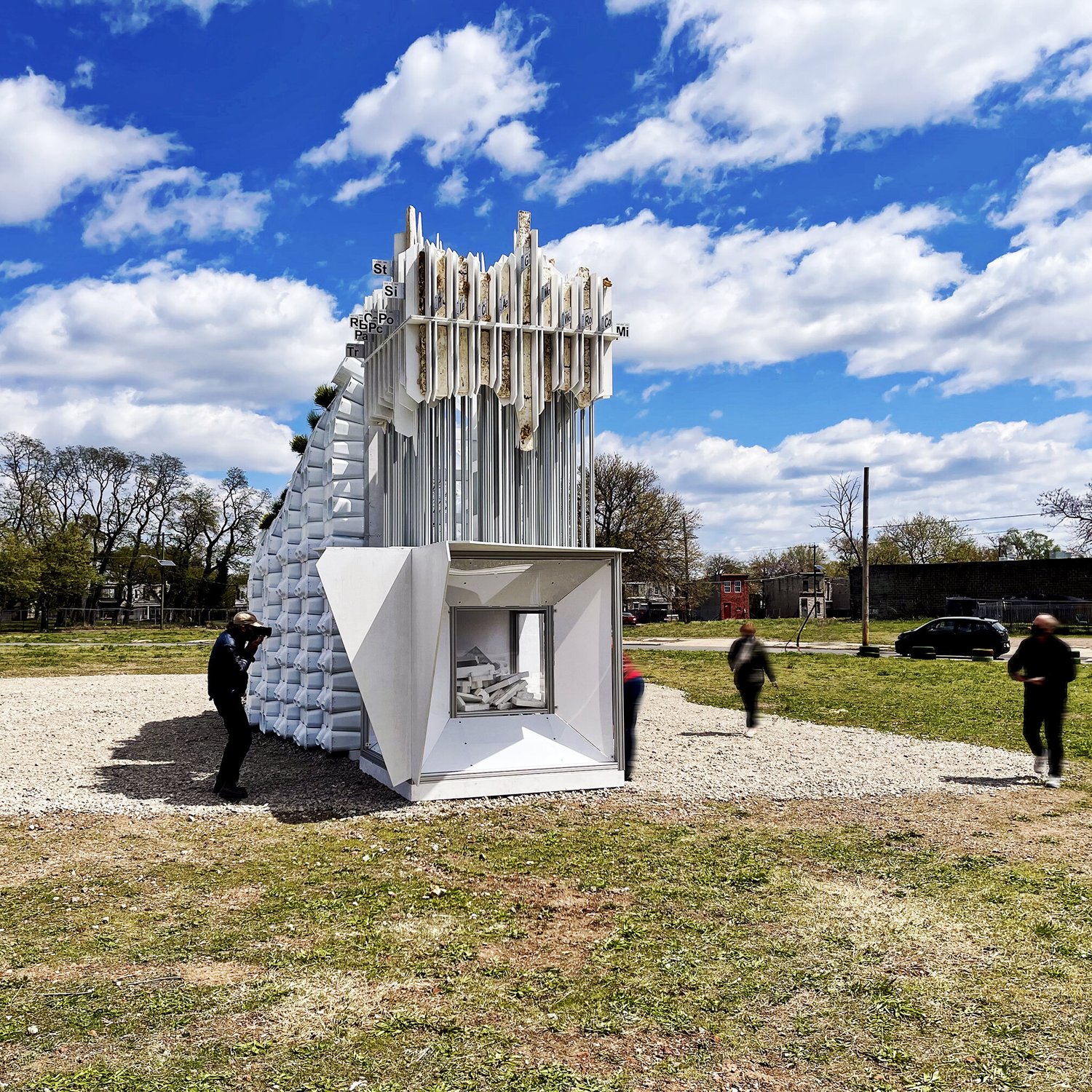
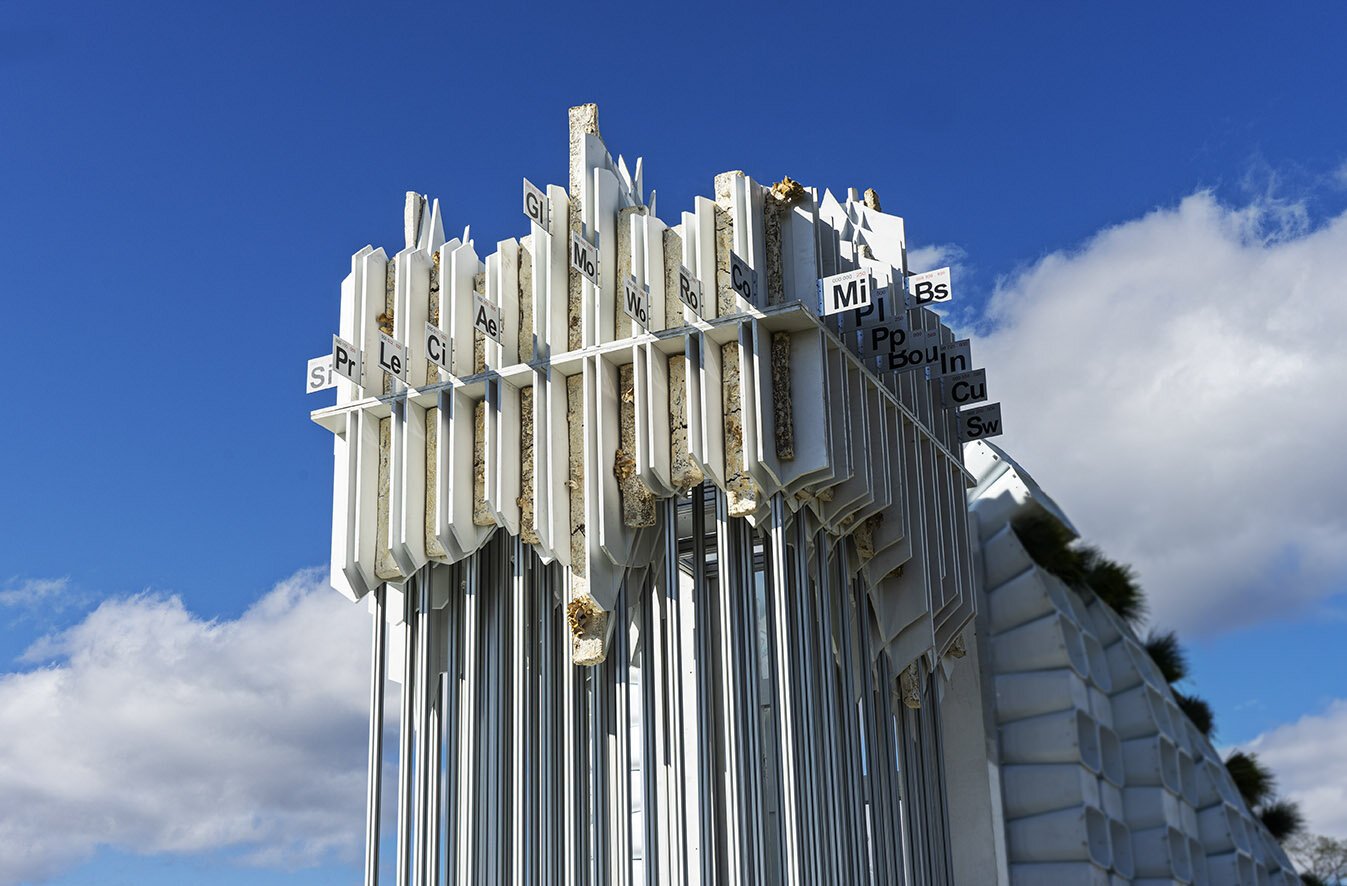
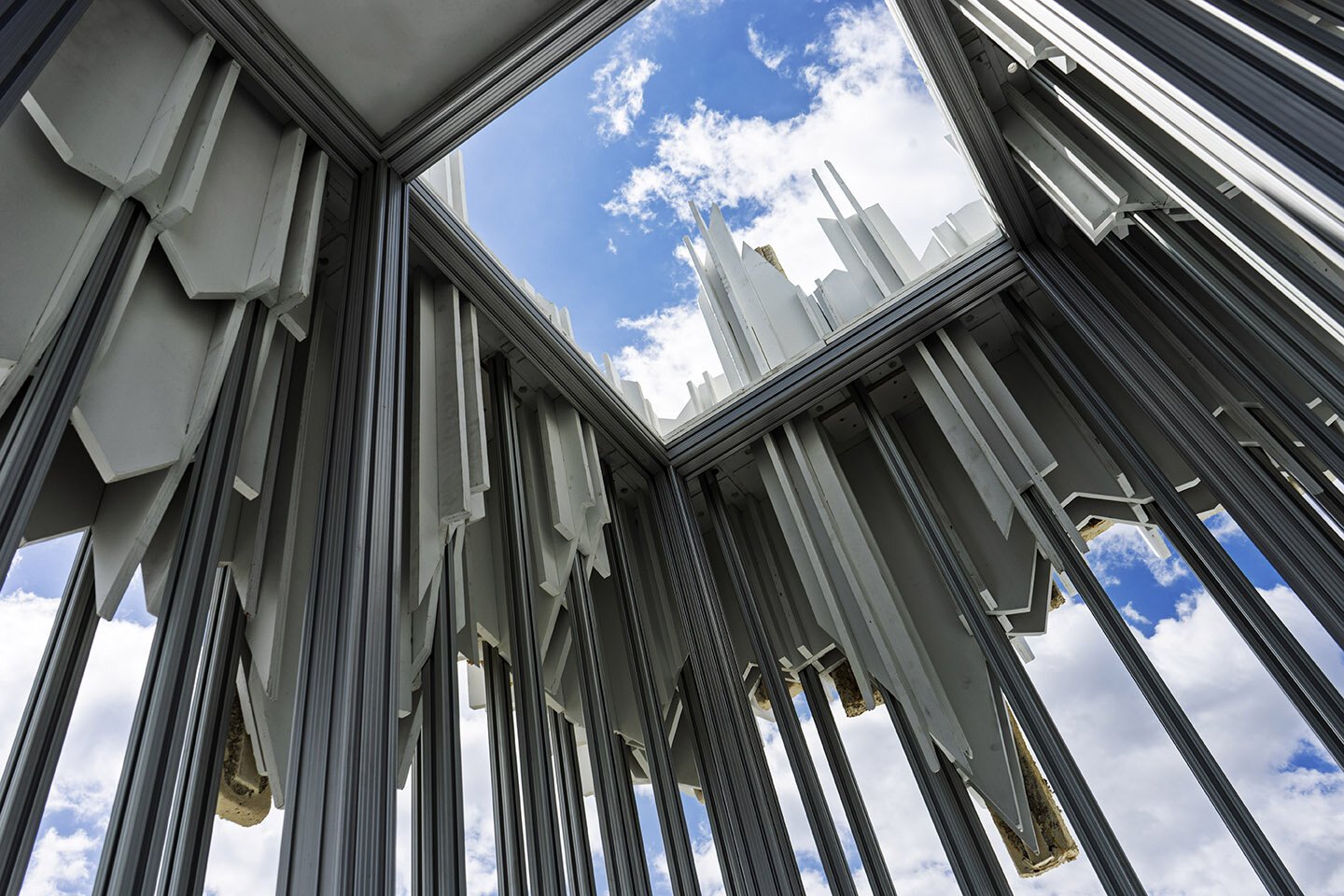

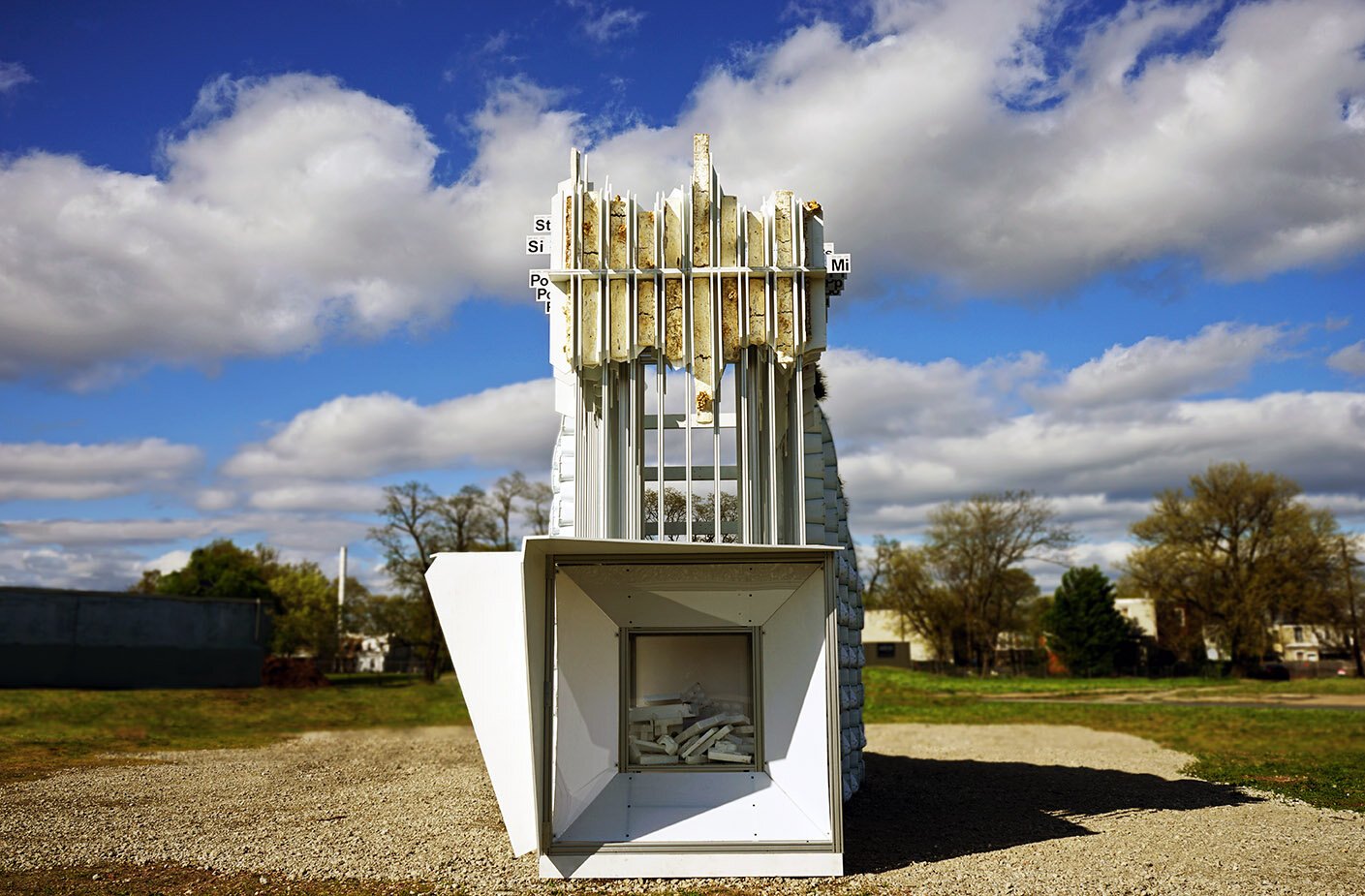
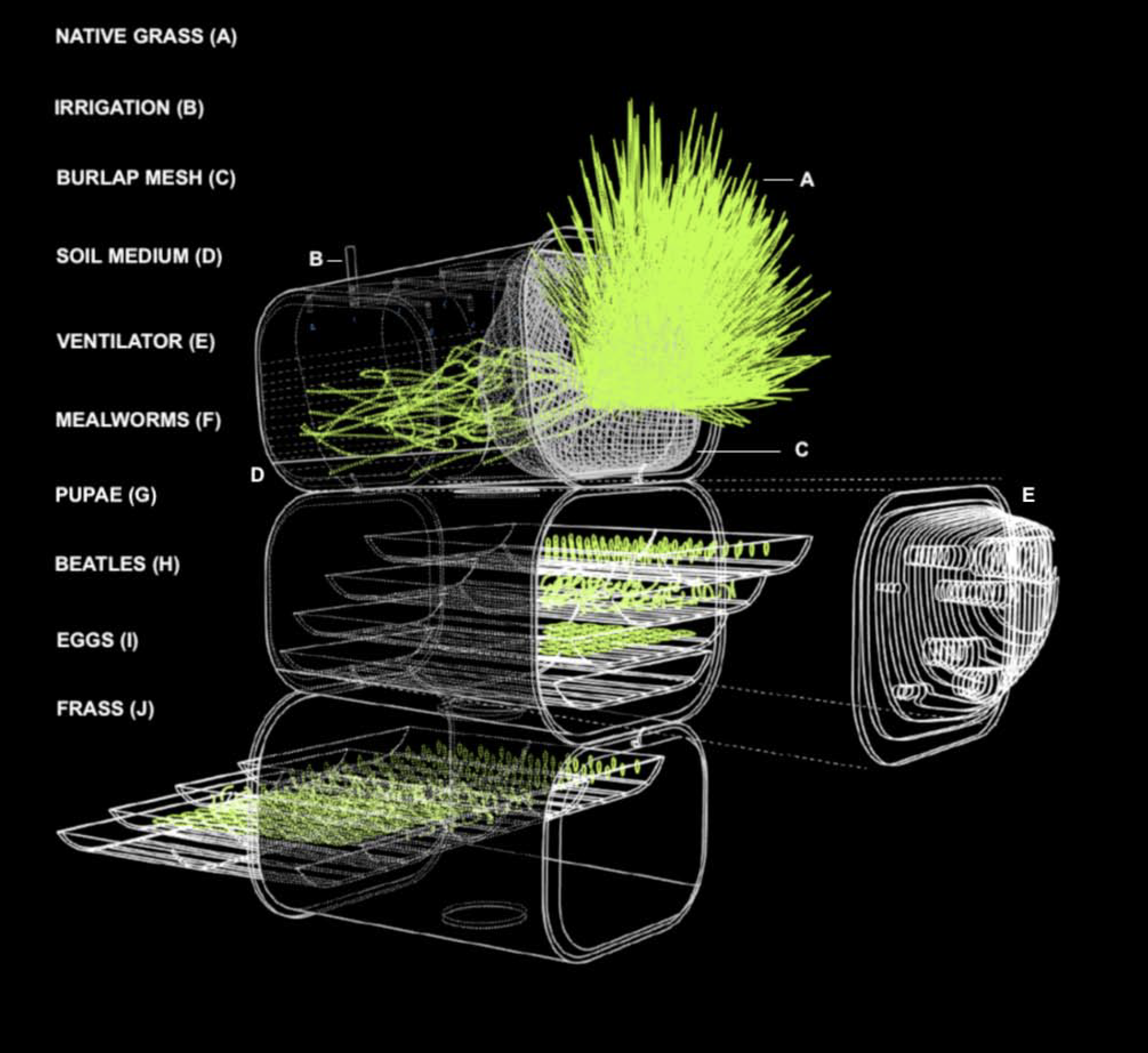
Client: Bloomberg Public Art
Location: Camden, NJ, United States
Completion date: 2021
Project Team
Project Leader
Mitchell Joachim
Terreform ONE
Project Management
Vivian Kuan
Terreform ONE
Overview
LOCATION:
Camden, NJ
MEDIUM:
Aluminum, wood, mycelium, wood pallets, planters, local flora, styrofoam, live mealworms
DIMENSIONS:
Cube: 7’x7’x7’
Hight: 15’
Lenght: 30’
The Bio-Informatic Digester is a living machine that utilizes mealworms (Tenebrio molitor) to eat Styrofoam packaging e-waste. Styrofoam refuse is thought to be non-biodegradable as it is extruded from synthetic aromatic hydrocarbon monomer styrene (PS). However, mealworms have the uncanny ability to reduce and mineralize the polystyrene into a perfectly safe compostable mulch for gardening. At the project base, the transparent tesseract cube showcases mealworms devouring community donated Styrofoam. On the top of the cube, mycelium panels reveal a graph that compares the natural erosion times of various common waste materials. The public can visually see how incredibly long it takes for most discarded synthetic waste items to degrade within an environmental context. This project demonstrates a new method of regenerative biologically-driven upcycling that contributes to increased urban biodiversity. Furthermore, the project maximizes the often-unseen beneficial behavior of insects.
Goals
By manifesting ecological routines into a visible spectacle this becomes a utilitarian mechanism for building awareness and communicating organically healthier societies. Instead of burying in landfills or hiding urban metabolic infrastructure, reversing its presence becomes a desire. This system shows nature as an aestheticized and functional event in its myriad of forms. It will offer the public the capacity to see waste, energy, and agricultural systems in flux – highlighting their value and immediacy. It is entirely orderless and easy to manage, as mealworms are commonly produced for livestock across the globe.
Process
The public is encouraged to bring their own Styrofoam waste. An accessible metal slot and chute on the top is meant for feeding the digester your own discarded e-waste materials. Over a 1-3 month duration the mealworms devour all of the plastic components into frass (excrement which can be used as fertilizer). About 100,000 mealworms consume a cubic meter of polystyrene per month. People can see their waste disappear online with our time-lapse camera setup or return and see it in person. A composting system by these benevolent organisms is feasible because of the speed of breeding of mealworms and the lightweight/ low density characteristics of polystyrene is advantageous for bio-based consumption. Mealworms fed only polystyrene for a whole month turn out to be as healthy as the ones fed a normal diet of bran. After the mealworms digest polystyrene, the output is 49.2% useful fertilizer and 47.7% carbon dioxide, CO2. Following a period of three months their life cycle resets as mealworms turn into beetles that mix with the soil. We suggest distributing the compost to a garden next to this system, as many of these beetles feed the local bird population.
Additional Information
Credits: Mitchell Joachim, Vivian Kuan, Connor Lambrecht, Nicholas Gervasi, Sky Achitoff, Mamoun Nukumanu, Iyad Abou Gaida, Vivian Jiang, Robin Stiefel, Theo Dimitrasopoulos, Zach Saunders, Lisa Wood Richardson, Nina Anker